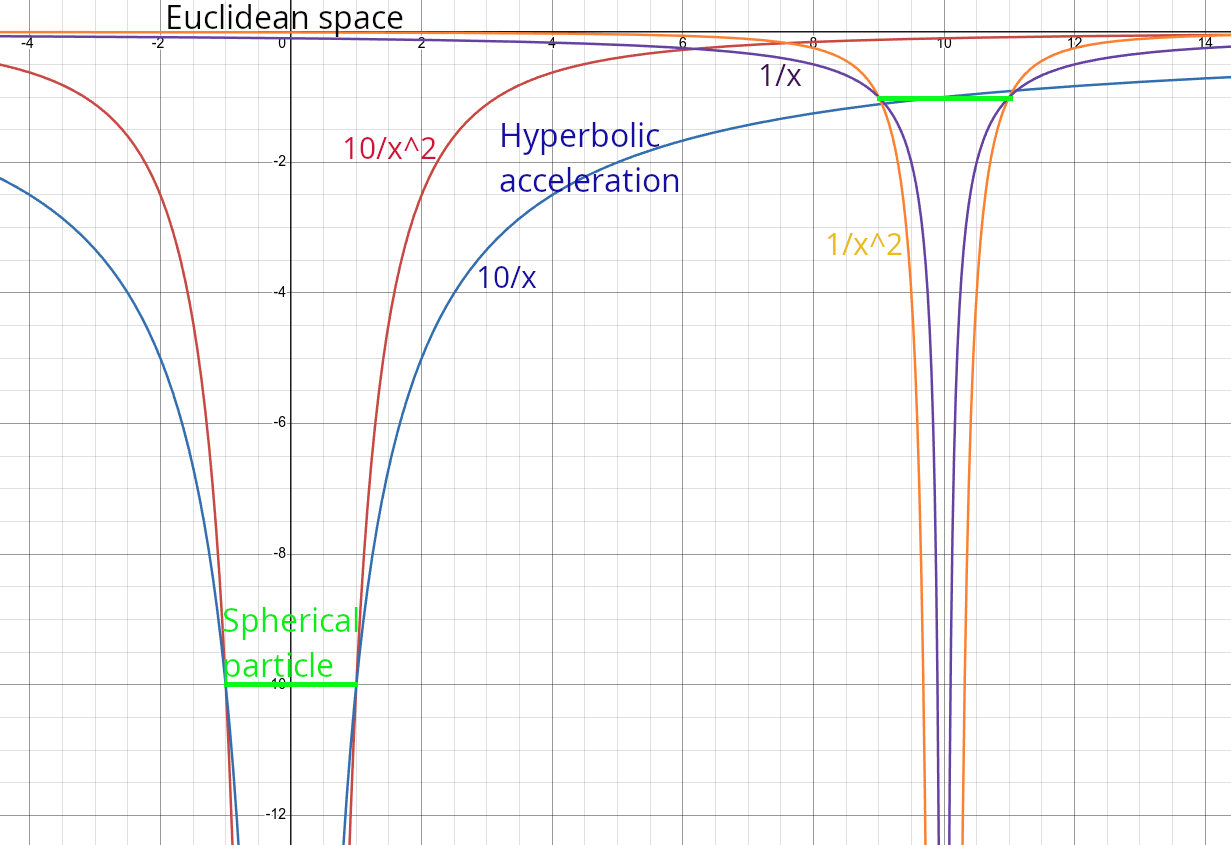Euclidean (flat): Exactly one.
Hyperbolic: Infinitely many.
Spherical: None.
Each geometry also has a different answer to the question, “How many degrees do the interior angles of a triangle sum to?”
Euclidean (flat): Exactly 180 degrees.
Hyperbolic: Less than 180 degrees.
Spherical: More than 180 degrees.
Cosmologists have been trying to experimentally verify which sort of geometry our universe obeys. The answer they have found is: both Euclidean and hyperbolic, depending on how you measure things. (Non-accelerating objects follow straight paths. Accelerating objects follow hyperbolic paths.) This troubles them deeply. They consider this a contradiction.
I say there are no contradictions, and that they are missing the spherical aspect of the particle. Embrace the healing power of AND!
Space itself is flat and euclidean. Accelerated motion is necessarily hyperbolic (inverse), because it is the sum (integral) of an inverse square force. Particles are ellipsoids with an inside and an outside. The properties of the inside of a particle do not necessarily translate, either directly or indirectly, to a force outside the particle.
Take quantum spin as an example. Despite what many physicists have been taught to believe, it really is spin. (If it looks like a duck, walks like a duck, quacks like a duck, and lays eggs that hatch into ducklings, then denying it is a duck is a religious belief.) But it is a sort of spin that has little effect outside the boundaries of the particle itself. It doesn’t bend spacetime. It doesn’t generally cause the particle to exhibit curved motion. It “merely” prevents two similar half-integer spin particles from occupying the same space. Which is a profound effect - but only on the behaviors of the particles, not on the field which they inhabit. Oh, and it helps differentiate particles with identical electric charge. (It also gives them slightly different energy levels depending upon the direction of spin, and doesn’t that put the cat among the canaries?)
No matter our frame of reference, we always measure the rate of spin as identical.
No matter our frame of reference, we always measure electric charge as identical.
No matter our frame of reference, we always measure rest mass as identical.
This is not a coincidence. It is an effect. What’s going on inside those particles is operating in a different geometry from the fields they influence and are influenced by.
The space and time we experience in everyday life is flat and Euclidean.
The potential energy (gravity) and electromagnetic fields are inherently hyperbolic.
Particles are ellipsoids (spherical geometry) with a distinct inside and outside.
The difference between hyperbolic gravity and Euclidean space and time causes the strange effects of relativity. The difference between spherical particles and hyperbolic fields causes the strange effects of quantum mechanics.
Particles and fields are separate but intertwined. Everything is made of geometry, but not everything is made of the same geometry.

No comments:
Post a Comment
I reserve the right to remove egregiously profane or abusive comments, spam, and anything else that really annoys me. Feel free to agree or disagree, but let's keep this reasonably civil.